From a Mooney to a Skybolt
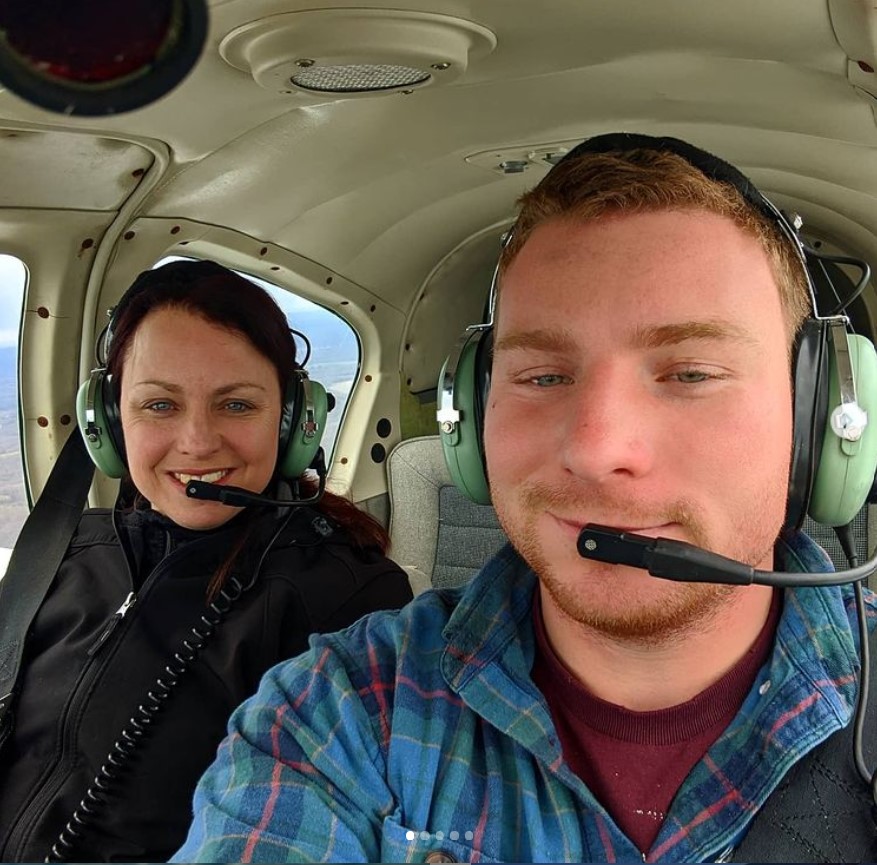
(photo - with mom in the Mooney)
I am the first member of my family to get into aviation. I hope to change that, however, and my daughter (now 5 years old) has been flying with me since she was 3 months old. She doesn’t tolerate going straight and level for long. So if she gets upset, I just push or pull or drop a wing a bit, and she cheers right up. I’ve even had her grab hold of the controls, and she just yanks hard and tries to send the nose vertical. (I stop her from doing that, of course.)
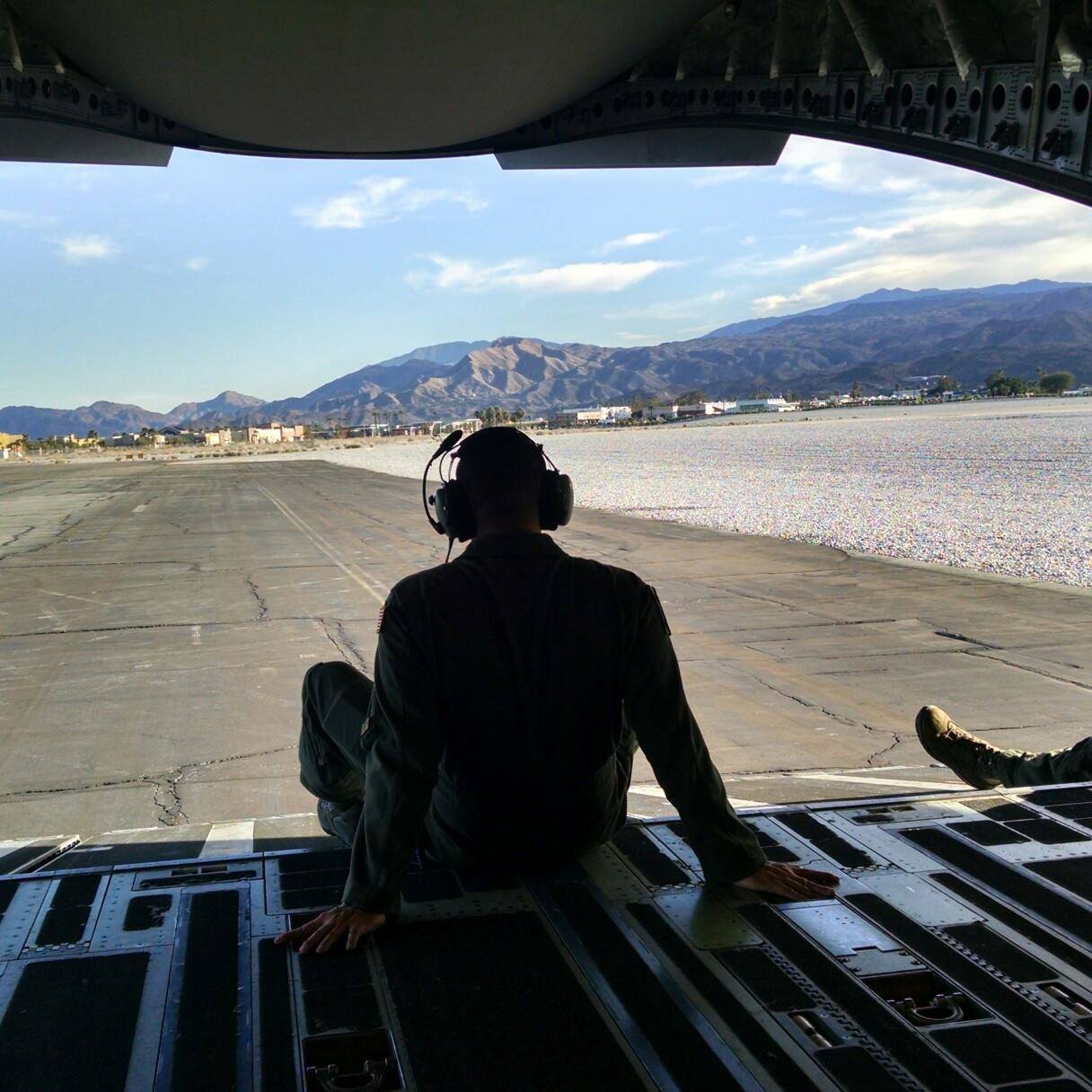
(photo right - My first mission as a load master)
To help out on the expense of further training, I looked into getting involved with a local flying club. On the other side of the club was Bob Cameron’s (Crew Dog Aviation) hangar. He became an aviation maintenance mentor to me and would be instrumental in helping me buy my first airplane, a ’59 Cessna 172.
Our first interaction was when Bob and his friend Barry were starting to clean out the hangar. I walked over and introduced myself and offered to help clean the hangar. Bob was a retired C-141 crew chief, so we got along great. He had been fixing airplanes his entire career, and I wanted to learn more about the maintenance side of things. So I started helping Bob around the hangar on my time off. The mentorship continued the entire time I lived in New Jersey, and I learned most of what I know about GA maintenance from Bob.
I eventually sold my 172 and used the funds to purchase the Mooney from Alan Fox who is well known in the Mooney community. Alan had a hangar directly across from Bob, and the both of them helped me tremendously with navigating the many facets of aircraft ownership. When I moved back to Pittsburgh, I went back to where I initially started training and developed a similar relationship with Tom Kijowski at McVille Airport (6P7), Freeport, Pennsylvania.
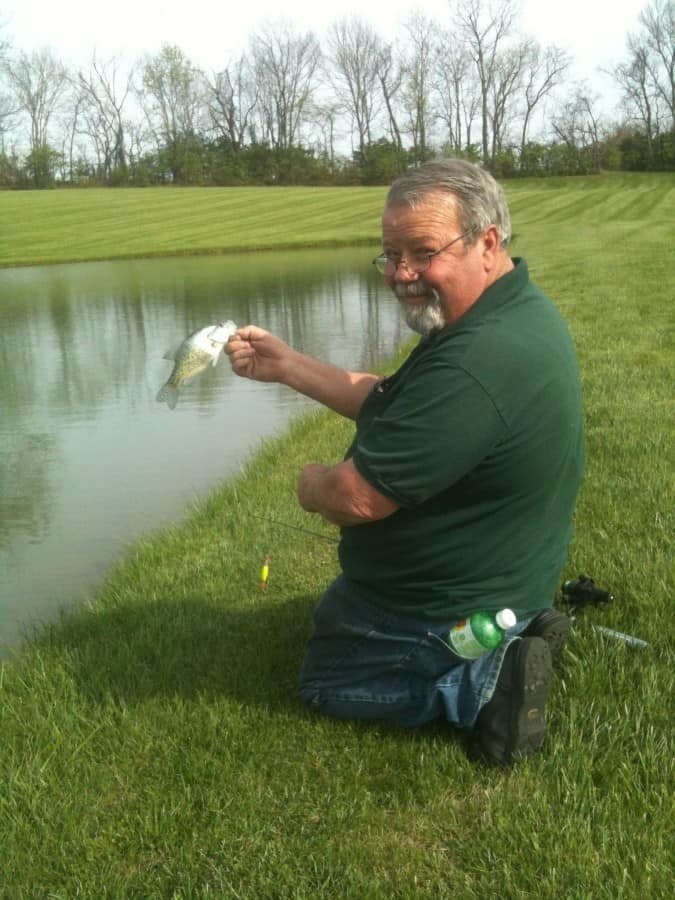
Even though I always try to help with what they are working on (Bob or Tom) before asking questions or for help myself, I still feel they have helped me way more than I ever helped them. I am very lucky to be able to have mentors like Tom (and formerly Bob, as he passed away not long after I moved away), but I definitely think my willingness to help in any capacity and eagerness to learn as much as I could from their experience really helped cultivate the relationship. I still remain by the fact that I would not be where I am and would not own my own aircraft if it were not for Bob, and then Alan, and then Tom, mentoring me along the way. So I am very grateful for them, and I intend to pay it forward.
(photo right - Bob Cameron)
Once I got the Mooney, I started to realize that there might be a way to make videos to inspire others to try to pursue aviation. I continued on to aircraft ownership despite the fact that I was by no means rich. I had purchased my first airplane for half as much as the average car and have continually just traded up airplanes since. Obviously, money and aviation are synonymous, but I wanted to break the barrier of others feeling that they needed to be a rich person or from a rich family to be able to be a part of the much larger family that is aviation. The video was the vehicle to share my experience, and in turn, I could learn from a much wider audience who related to my experiences. That’s why I named my YouTube channel Average Aviator; I’m just an average person that has a passion for aviation.
Though I loved the Mooney’s speed and low fuel burn, what I noticed that no one ever seemed to talk about was the fact that the Mooney’s controls were so responsive, and it was a nimble and smooth-flying airplane. It was like flying a sports car; full deflection of the ailerons was less than half the throw of the yoke compared to a Cessna or Piper, but it still seemed to have a higher roll rate. I loved banking and yanking in the Mooney, but as much as I enjoyed the Mooney, I traded it for a Skybolt in November 2020. I really wanted to try my hand at aerobatics. I knew I wouldn’t grow much in experience if I simply continued cruising around in the Mooney, and I also couldn’t afford two airplanes.
I entertained the idea of a trade and listed the Mooney on Barnstormers as a “trade for aerobatic” just to see what kind of market there was. I turned down a number of cash offers but eventually got a call from a Jerry Morris in Ohio who owned the Skybolt. After we swapped rides for a flight, I was hooked and made the very hard (but now I definitely think worth it) decision to trade for the Skybolt.
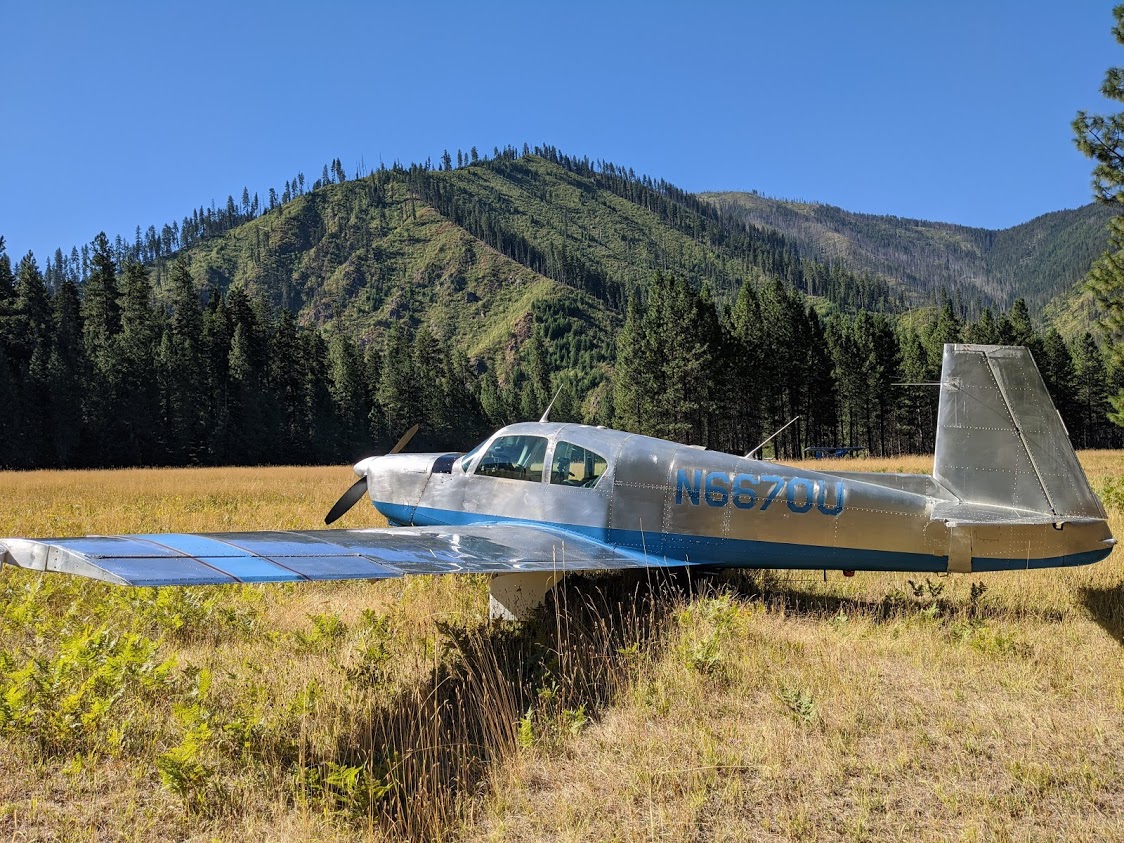
(Photo below right - the Mooney at Johnson Creek, Idaho).
There was one 1.5-hour training flight in the Skybolt with Dave Messersmith. After landing lessons, he would demonstrate some maneuvers on the way back to my home airport. That really got me hooked on aerobatics. The weather finally broke in March, so I took one more flight with Dave where I soloed with less than four hours dual in the Skybolt. As of this writing, I have just under 30 hours in the Skybolt and just over 35 hours’ total tailwheel time.
With limited funds, I started watching videos and reading books on aerobatics. The videos I watched the most were old training videos filmed by the U.S. Army Air Corps that were used to train pilots in World War II. Other favorite videos were those I found on the IAC website on the Aerobatic Figures webpage under the Where to Begin dialog box (IAC.org > Where to Begin > Aerobatic Figures).
The IAC videos are actually more about properly executed maneuvers to the IAC judging standards created by Gordon Penner and Jeff Granger. Because they show the drawn Aresti symbols and Gordon walks through each piece of the maneuver, I found them very helpful. I also enjoy the Jim Bourke critique videos. I picked out one of Jim’s critique videos on the Great Lakes because it seemed most like the Skybolt in performance. It helped get me on the right track.
With the demonstrations of the Skybolt’s capabilities when I flew with Dave Messersmith, I felt I could practice what he had shown me at a high altitude. That coupled with what I had learned about aerodynamics in a course at college and the videos I had watched. It was time to start practicing on my own. How to get started in aerobatics.
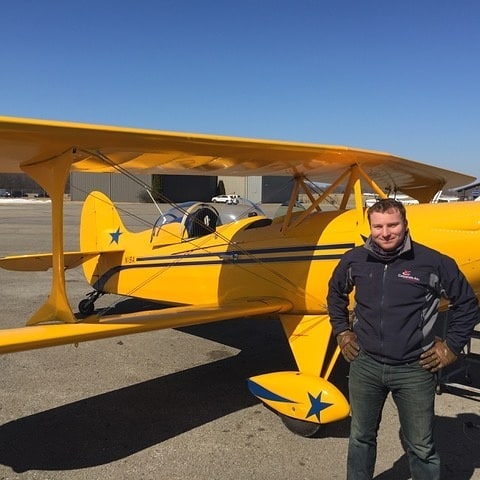
I typically practice at an altitude of 4,000-4,500 feet AGL. After reading a number of books and watching tons of videos to get the understanding of the basic maneuvers, I “chair-fly” them before heading out to fly. I also work slowly into the maneuvers. For example, I learned the aileron roll by doing steeper and steeper wingovers, practicing rolling out of them (and drilling not pulling out of the maneuver) until I finally continued the roll all the way around. I’ve been practicing aileron rolls, loops, slow rolls, spins, snaps, a little into hammerheads, plus some variations of the loops and rolls. I’m more focused now on making the basics clean and consistent than trying to get into harder maneuvers.
(photo right - first solo in the Skybolt)
There was some apprehension when it came to spins. I think it was the stigma around them causing many accidents and the fact that I had never done one in my flight training. Also, when I restarted my training in New Jersey, I did a stall that started dropping a wing, and I instinctively compensated with aileron, which of course made it worse. I quickly realized my mistake and stomped on the opposite rudder and recovered without even passing 60 degrees, but the abruptness of the drop and the fact that I had just restarted my training made me apprehensive about getting into one. This was emphasized by the fact that the spin is not required to even be demonstrated by an instructor for the private pilot certificate, which is a huge negative oversight in my opinion.
Another factor in my apprehension was that the Mooney was prohibited from doing spins, and the rumor was that any spin would eventually turn irrevocably flat in that airplane. I didn’t understand what would make a spin flat, and so I really didn’t want to ever get into a spin in the Mooney. Therefore, I became almost afraid of the spin anytime I had to demonstrate a stall during a biennial flight review. All of this just perpetuated until I was reading the aerobatic books, and the first sections covered spins and spin recovery along with discussions on failure modes during maneuvers. I chair-flew spin recovery and practiced the motions on the ground in the Skybolt. Eventually, I went up to the practice area and slowly worked stalls and then added more rudder and recovered later and later in the incipient phase until I eventually worked my way to doing three or more turn spins, even figuring out how to recover on a desired heading. It was ridiculously fun, not only because it was fun to enter and recover from a spin, but it was another maneuver that I learned to perform. That is one of the best feelings for me: not being able to do something, figuring it out, and then being able to do it and having fun at the same time. It’s just a great sense of accomplishment.
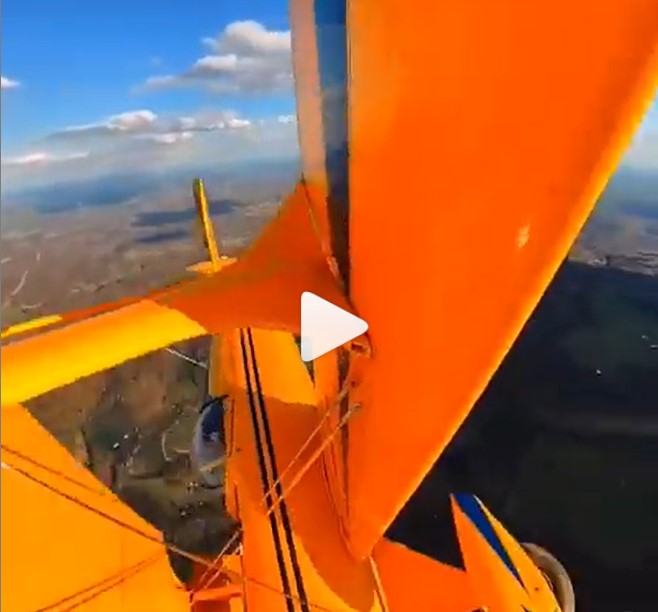
My favorite aerobatic maneuver so far is snap rolls. I am still rubbish at getting them to stop exactly after one turn and where I want. (I’ll end up with a wing and nose a bit low or high.) But I’ve only just started practicing them, and the roll rate makes them tons of fun. Slow rolls are also surprisingly fun for me because of the challenge at making them as slow as possible.
(photo right - video of a Cuban 8 on Instagram: https://www.instagram.com/p/COjsqH0BCyA/)
There is an enjoyment in flying as precisely as possible. It is enticing, and I will definitely want to get into competition. I have no idea if I’ll be any good or when I might be able to do a competition. Of course, as of right now it’s recreational, and I do it because I enjoy the challenge and learning new things, but I am looking at the logistics and practicality of possibly entering one or more of the competitions in either Ohio or New Jersey in the fall.
Thinking back to when I had the Mooney, the thought of doing aerobatics seemed really cool and something I could get into, but I had no idea what the IAC was, or what competition aerobatics was, or even how to ever get into aerobatics in general. As I finish up my series documenting my experiences with the Mooney, I think another great challenge I am going to try to tackle is to try to relate aerobatics to the everyday “aviation nerd.”
I obviously can’t say whether or not I’ll be successful at it, but I think it will be interesting to try to not only make videos that send the message of “Any average person can get involved in aviation and aircraft ownership,” but also try to say, “Not only can you be an average person and get into aviation, you can also get into aerobatics, and here’s my experience.” Relating aerobatics to the average pilot or aviation enthusiast is a hurdle. The tough part is getting people involved in the first place. Obviously, I’m a complete novice, and I don’t have all the answers. But I know before I got started in aerobatics, I never thought I would be able to get to where I am now.
RESOURCES
Learn about getting started in aerobatics;
- https://www.iac.org/getting-started-aerobatics
- https://www.iac.org/legacy/common-questions
- https://www.iac.org/aerobatic-flight-schools
- The Basic Aerobatic Manual, by William K. Kershner
- Basic Aerobatics, by Geza Szurovy and Mike Goulian
- Emergency Maneuver Training, by Rich Stowell
- Spins in the Pitts Special, by Gene Beggs
- Better Aerobatics, by Alan Cassidy
- Primary Aerobatics, by Michael C. Church
- Advanced Aerobatics, by Geza Szurovy and Mike Coulian
- Intermediate Aerobatics, by Michael Church

